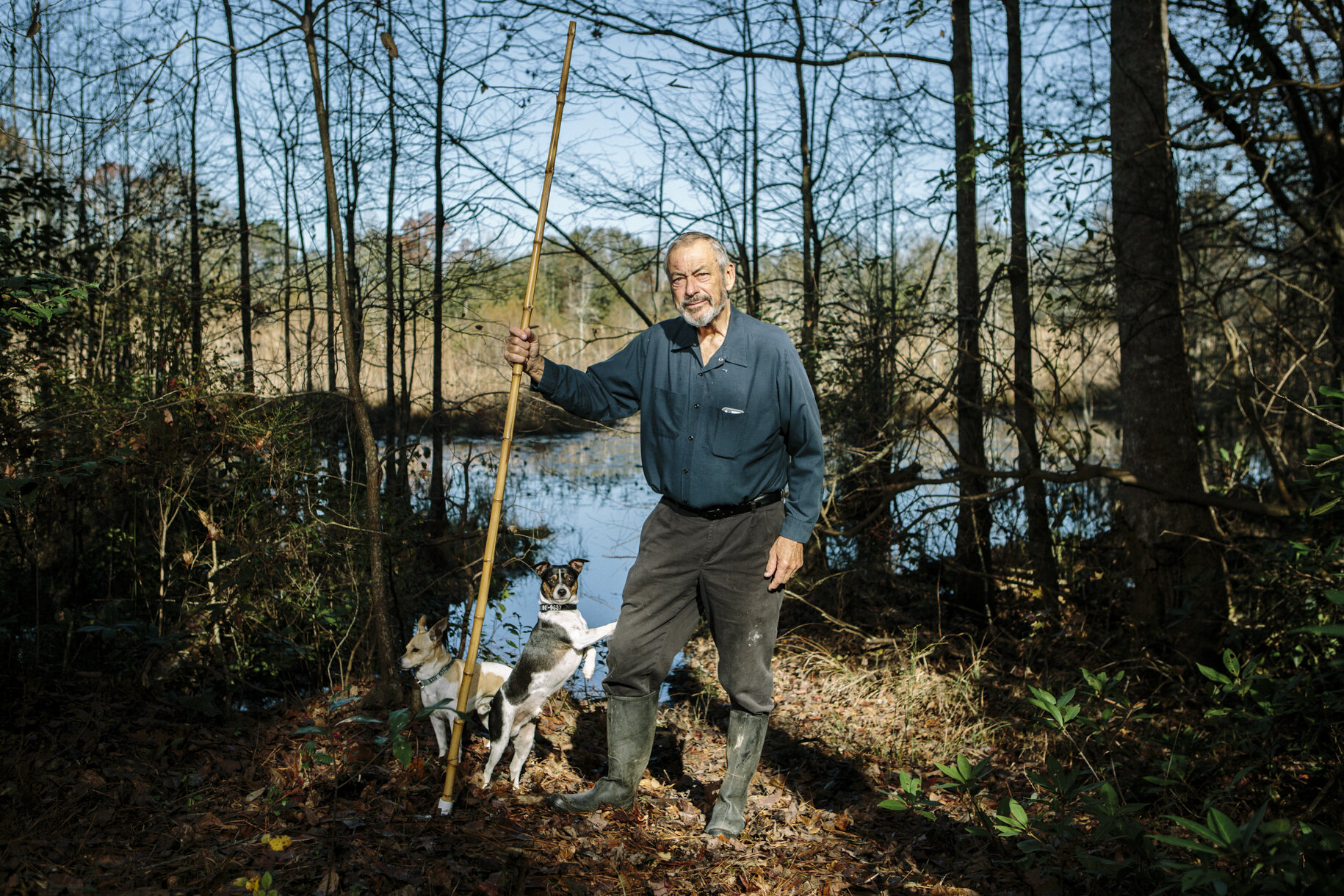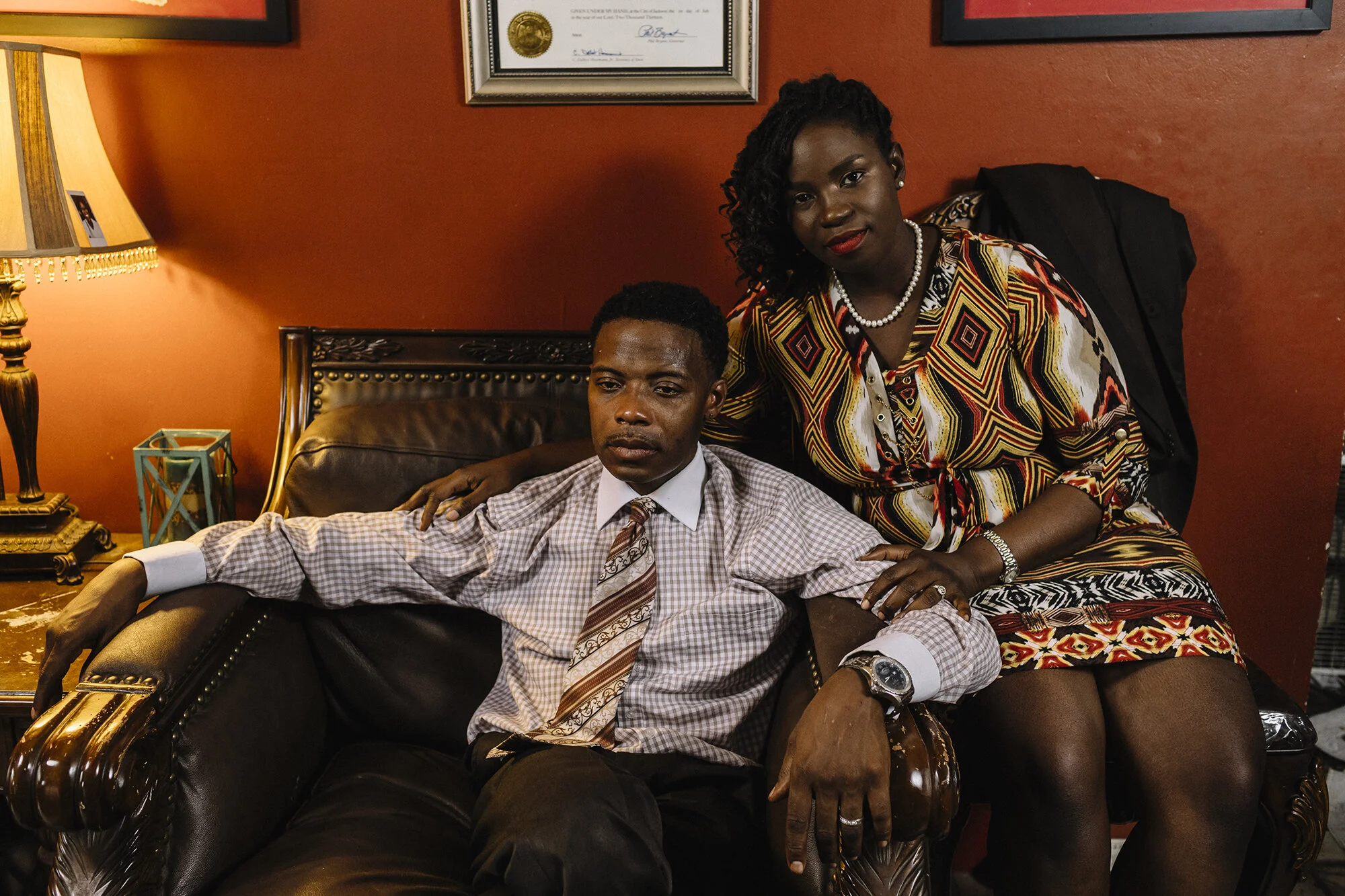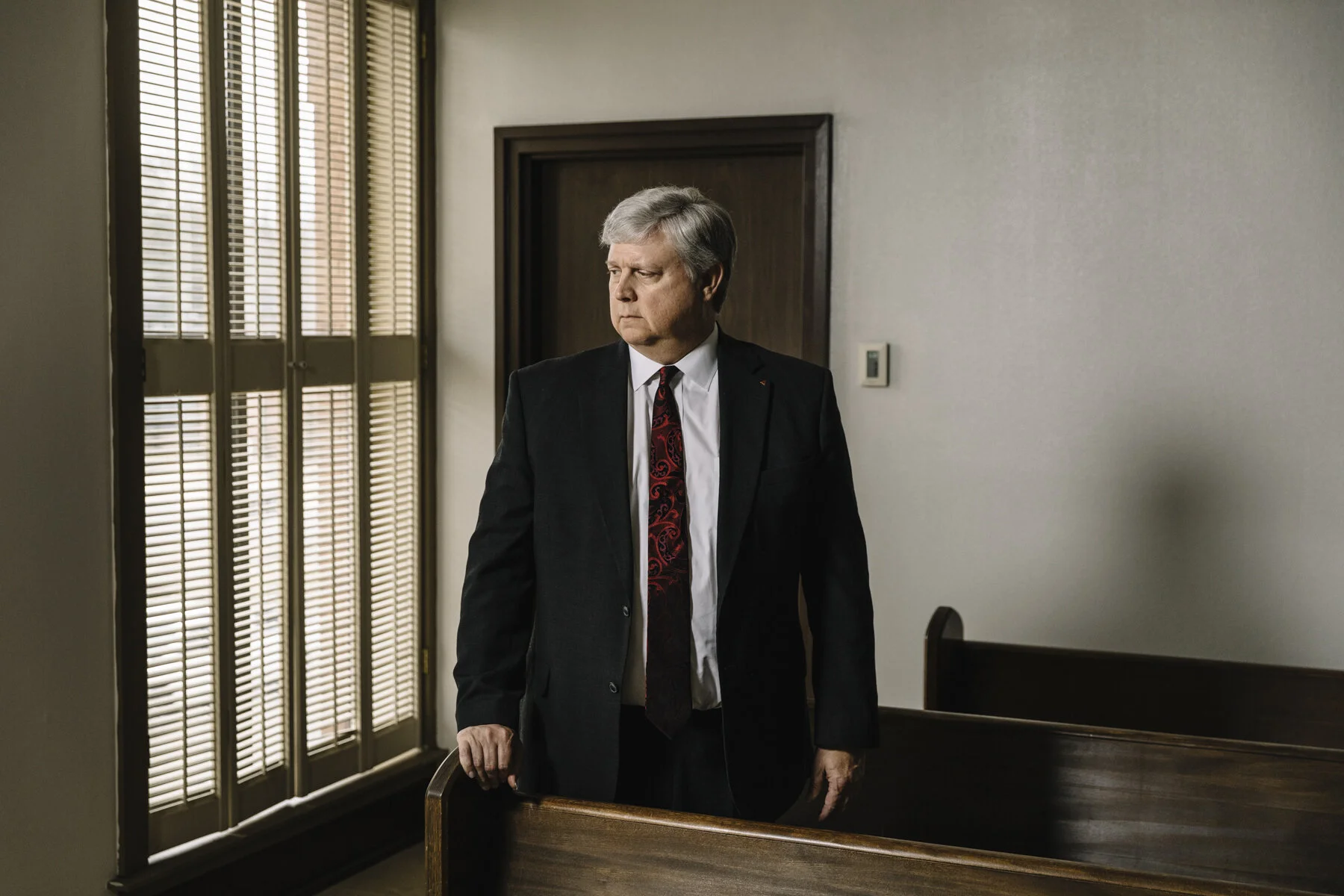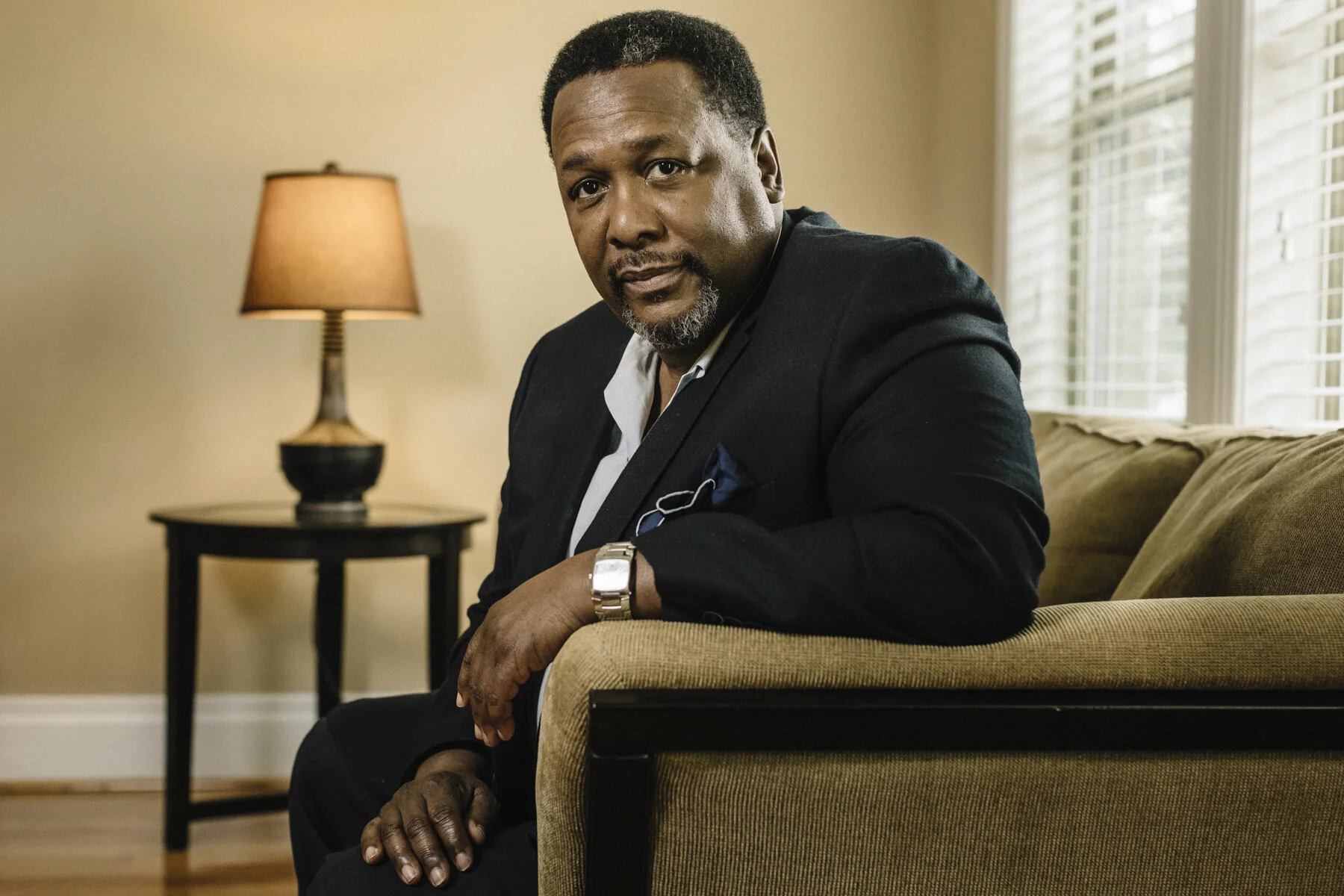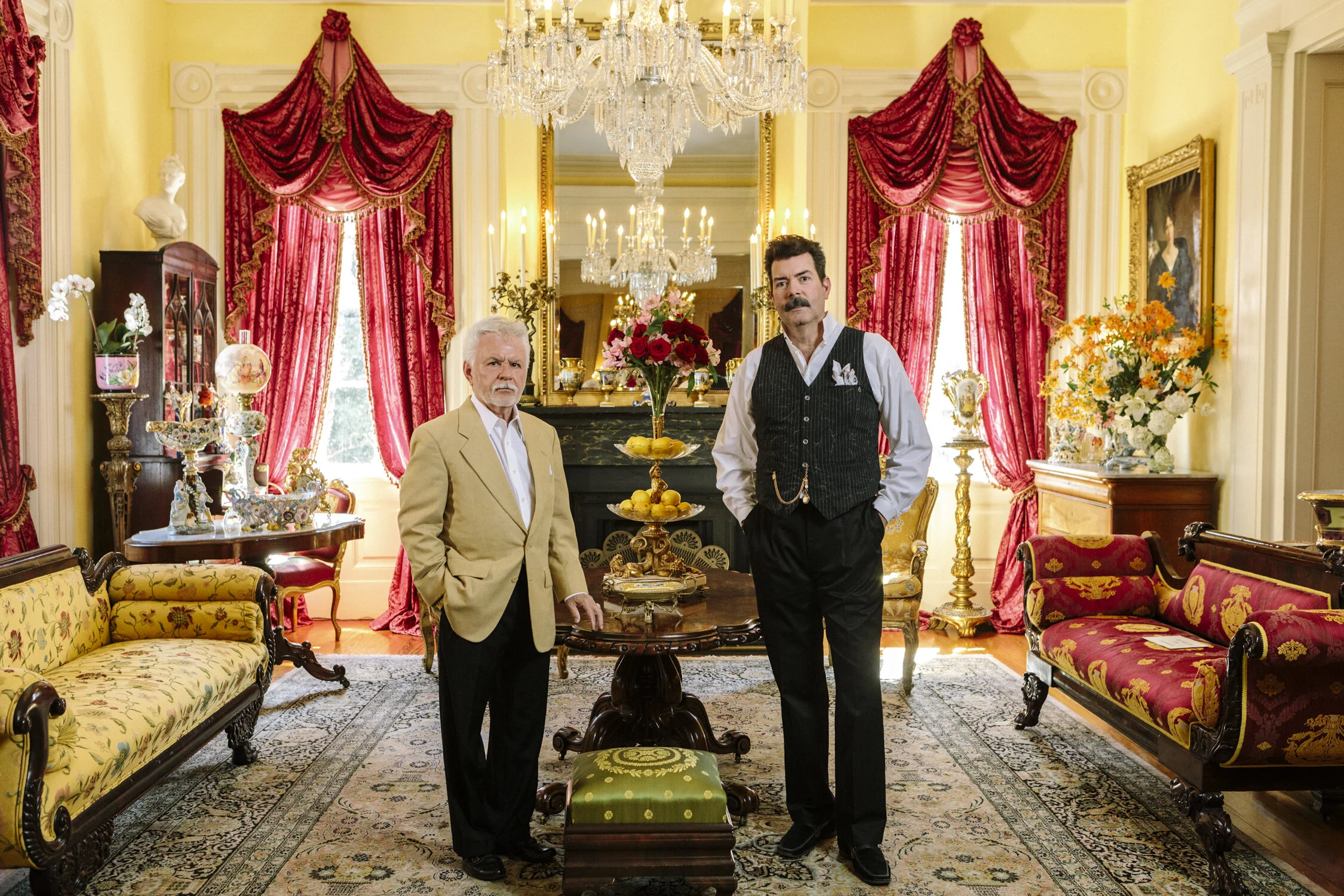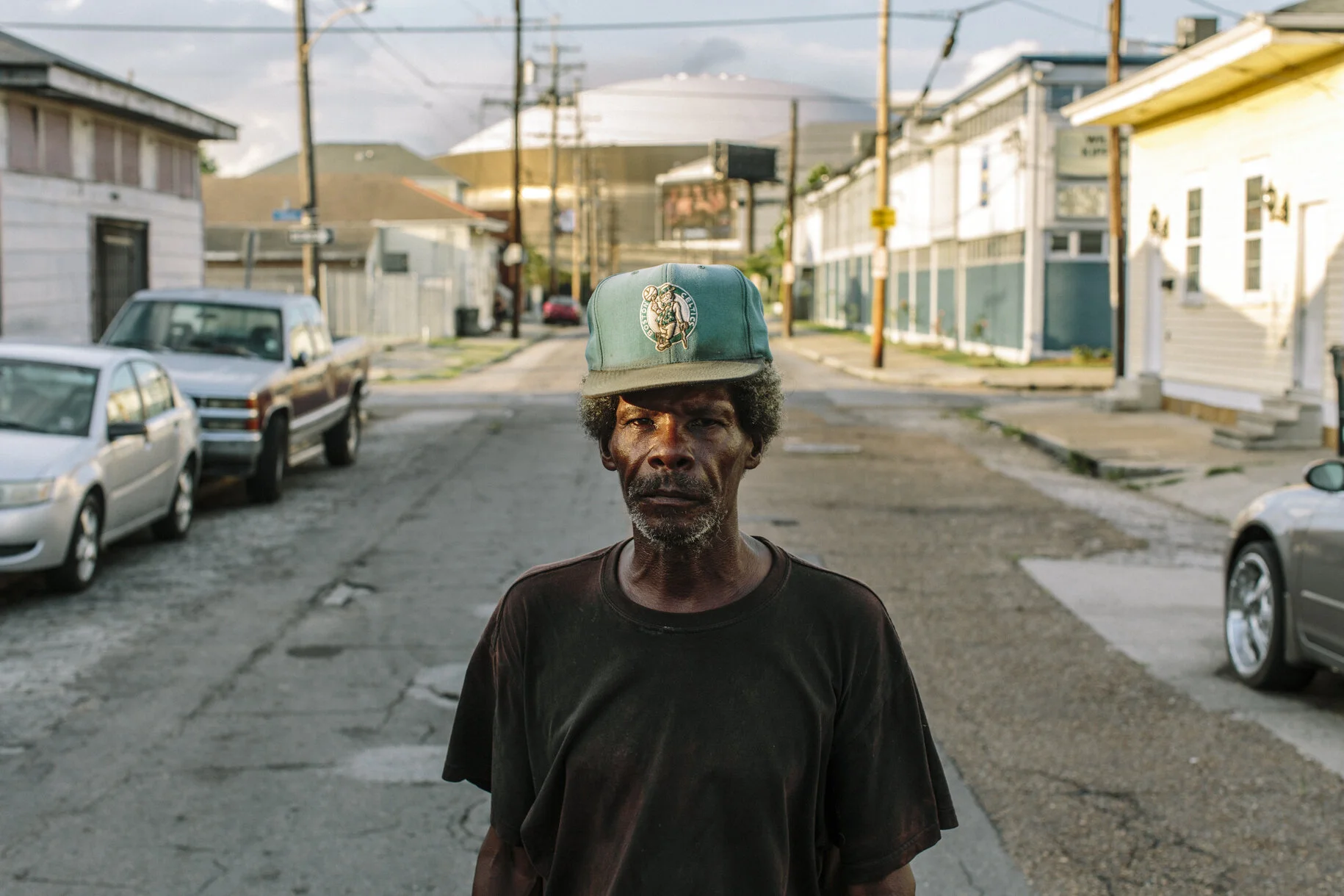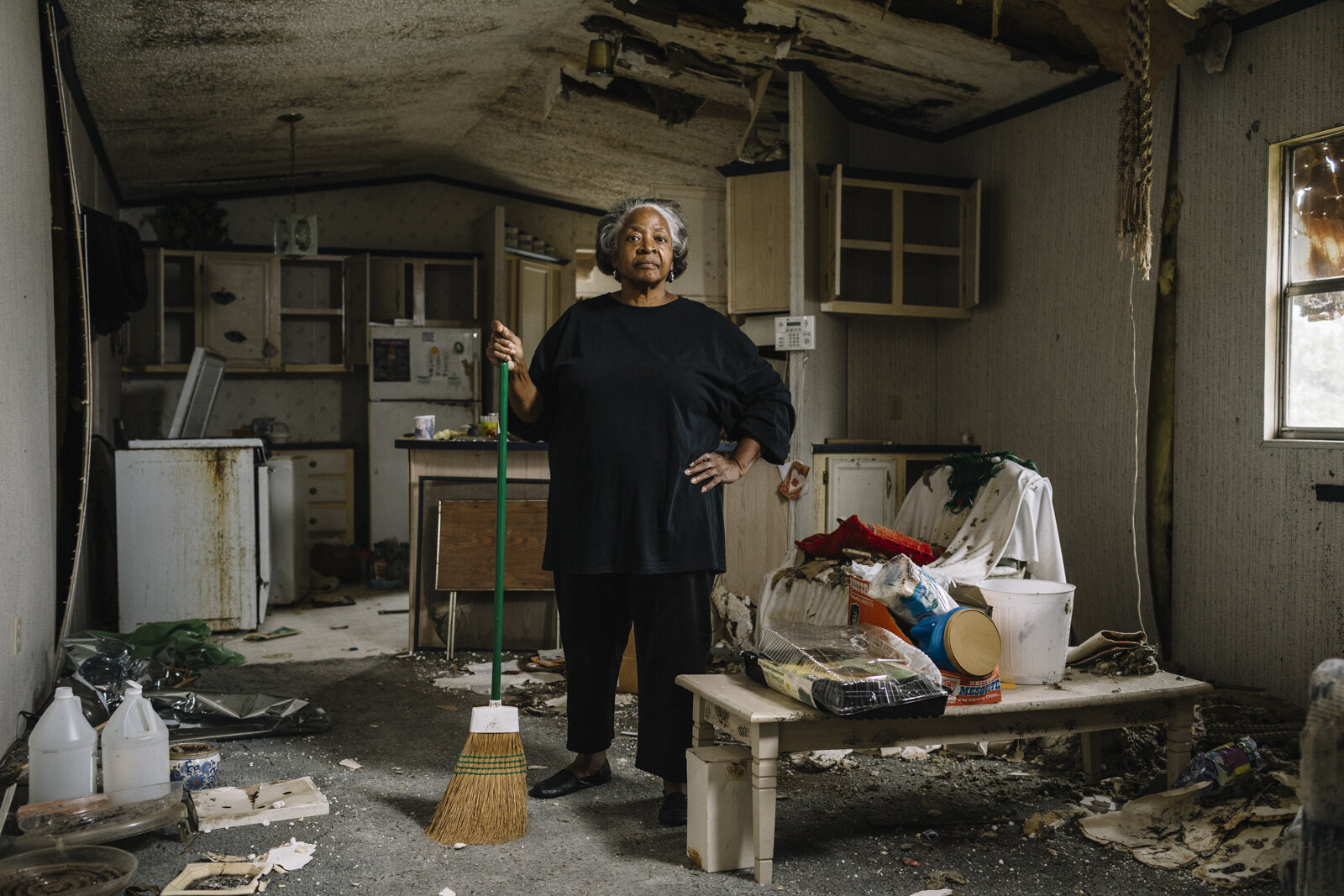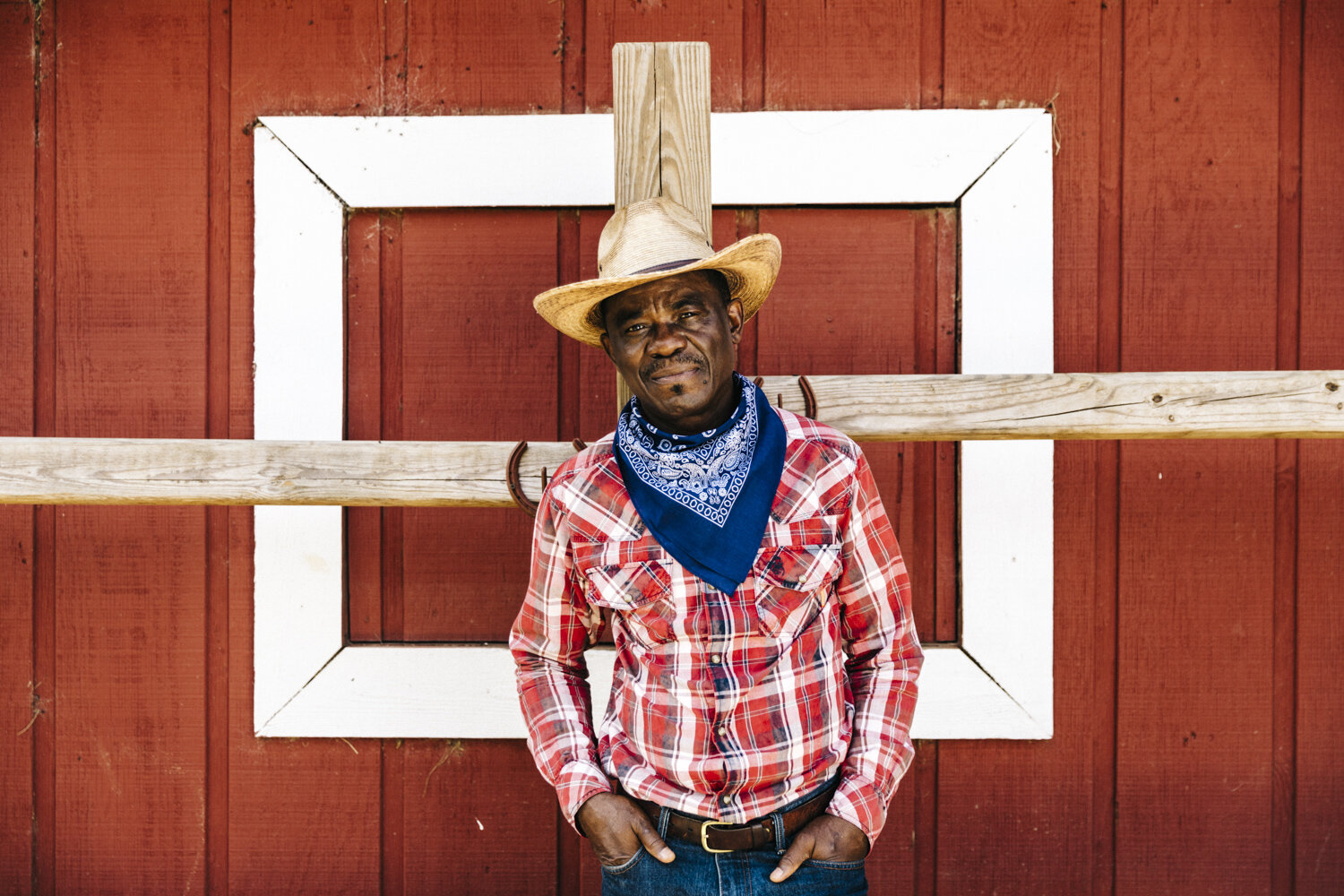![The Free State of Jones for Smithsonian]()
The Free State of Jones for SmithsonianSoso, MS - 12/4/2015 - J.R. Gavin stands in front of Sal Batree, a swamp allegedly used by Newt Knight and his men to hide from Confederate soldiers. The swamp is located on Gavin's property.
![Police Killing of Ricky Ball for BuzzFeed News]()
Police Killing of Ricky Ball for BuzzFeed NewsColumbus, MS - June 9, 2018 - Marty Turner (40) and his wife Tiffany Turner (30) sit in their living room in the Memphis Town neighborhood of Columbus. Marty Turner was a city council representative in October 2015 when Ricky Ball was killed by police.
![Rev. William Barber for Rolling Stone]()
Rev. William Barber for Rolling Stone
![Ice Divas Second Line Parade 2016]()
Ice Divas Second Line Parade 2016New Orleans, LA - 3/13/2016 - The Ice Divas Social Aid & Pleasure Club
![Big Freedia for Billboard]()
Big Freedia for BillboardNew Orleans, LA - 4/30/2016 - Freedia sits in her artist trailer at Jazz Fest as her hairstylist Mandy and makeup artist Artiz prepare her for the performance. Big Freedia, a well-known pioneer of bounce music, had two performances in her home town of New Orleans on April 30th. First, she played with a live band at Jazz Fest. Later in the evening, she played a similar set in the Warehouse District at Republic.
!["Ghost Warrants" for The Marshall Project / Kara Walker for The New York Times]()
"Ghost Warrants" for The Marshall Project / Kara Walker for The New York Times
![New Orleans Charter School Grads for The New York Times]()
New Orleans Charter School Grads for The New York Times
![20th anniversary of the James Byrd Jr. Lynching for The New York Times]()
20th anniversary of the James Byrd Jr. Lynching for The New York TimesJasper County, TX - June 23, 2018 - Sheriff Billy Rowles (73) stands in the road near the location where James Byrd, Jr.'s body was discovered in 1998.James Byrd, Jr. was murdered by three white supremacists in Jasper, Texas, on June 7, 1998. Shawn Allen Berry, Lawrence Russell Brewer, and John William King dragged Byrd for three miles behind a pick-up truck along an asphalt road. Byrd, who remained conscious throughout most of his ordeal, was killed about halfway through the dragging when his body hit the edge of a culvert, severing his right arm and head. The murderers drove on for another mile and a half (2.4 km) before dumping his torso in front of an African-American cemetery in Jasper. Byrd's lynching-by-dragging gave impetus to passage of a Texas hate crimes law. It later led to the federal Matthew Shepard and James Byrd Jr. Hate Crimes Prevention Act, commonly known as the Matthew Shepard Act, which passed on October 22, 2009, and which President Barack Obama signed into law on October 28, 2009.
![Female Hunting Culture for Al Jazeera America]()
Female Hunting Culture for Al Jazeera AmericaThornton, MS - 1/10/2015 - Amber McMillen (26, L), Cadi Thompson (25, Center) and Erin Potter (27, R) stand in the woods on Cadi's family property in rural Holmes County in the Mississippi Delta region. The three women are in the same nursing program at The University of Mississippi in Jackson.
![Capital Punishment in Alabama for ProPublica]()
Capital Punishment in Alabama for ProPublicaSelma, AL - Jan. 14, 2019 - William Whatley, the defense attorney in Domineque Ray's original trial, stands in the courtroom at the Dallas County Courthouse where the trial was held.
![Roy Moore's Alabama for The New York Times / Police Killing of Preston Thornton for Playboy]()
Roy Moore's Alabama for The New York Times / Police Killing of Preston Thornton for Playboy
![Police Surveillance for The New York Times / Forced Plea Deals for The Washington Post]()
Police Surveillance for The New York Times / Forced Plea Deals for The Washington Post
![Environmental Justice in Cancer Alley for The New York Times]()
Environmental Justice in Cancer Alley for The New York TimesReserve, LA - June 16, 2019 - Darren Schnyder (54), Mary Hampton's son, watches TV while using a nebulizer to alleviate his chronic respiratory issues. Schnyder lives with two family members who also suffer from similar issues and rely on nebulizers. For years, the people living in St. John the Baptist Parish had felt they suffered a disproportionate share of health problems, including immune disorders, respiratory distress, headaches, heart troubles and cancers. Near the end of 2015, a report from the Environmental Protection Agency showed that the census tract in St. John had by far the highest risk of cancer from air pollution in the nation. Nationwide the risk of cancer from chemicals emitted by industrial facilities was about 30 for every million people. But in this small neighborhood outside New Orleans, it was more than 800. The vast majority of the danger, according to the report, was from a colorless gas called chloroprene that the Dupont/Denka plant near their homes has been emitting since 1969.
![Lawtell, LA for The New York Times / Newnan, GA for The New York Times]()
Lawtell, LA for The New York Times / Newnan, GA for The New York Times
![Affordable Care Act Rollbacks for TIME]()
Affordable Care Act Rollbacks for TIMEHudson, OH - Oct. 28, 2018 - Christine and Larry Callahan stand with their children Claire (5) and Andrew (11) in the front yard of their home in a suburb of Cleveland. Andrew was born with a genetic disorder that resulted in his nervous system not developing correctly, and requires complete assistance for daily needs and extensive medical care. His parents are third generation owners of a small business and worry that any changes to the Affordable Care Act’s protections for pre-existing conditions could affect their medical insurance coverage.
![10 Year Anniversary of Hurricane Katrina for The New York Times]()
10 Year Anniversary of Hurricane Katrina for The New York TimesNew Orleans, LA - 7/12/2015 - Rodney Lavalais (29), a rising rap star known as Calliope Whyte, stands in front of a new townhouse building in his old neighborhood, still commonly referred to as the Calliope Projects.
![Wendell Pierce for Esquire UK]()
Wendell Pierce for Esquire UKNew Orleans, LA - Feb. 7, 2019 - Actor Wendell Pierce photographed at his home in the Pontchartain Park neighborhood of New Orleans.
![Natchez, Mississippi for Smithsonian]()
Natchez, Mississippi for SmithsonianNatchez, MS - April 1, 2017 - David Garner (L) and Lee Glover at Choctaw Hall in downtown Natchez.
![David Duke for The New York Times]()
David Duke for The New York TimesMandeville, LA - 9/2/2016 - David Duke is an American white nationalist, politician, antisemitic conspiracy theorist and former Imperial Wizard of the Ku Klux Klan.A former one-term Republican Louisiana State Representative, he was a candidate in the Democratic presidential primaries in 1988 and the Republican presidential primaries in 1992. Duke unsuccessfully ran for the Louisiana State Senate, United States Senate, United States House of Representatives, and Governor of Louisiana. In July 2016, Duke announced he was running for US Senate.
![Prisoner Transport Deaths for The Marshall Project / NYT]()
Prisoner Transport Deaths for The Marshall Project / NYTMeridian, MS - 6/5/2016 - Connie Ewing (on left), William Culpepper's mother, stands with his three sisters (L to R) Briana Griffin (23 - birthday on 6/30), Pauline Windham (33), and Akiesha Tanksley (39 - birthday on 6/17). On Jan. 30, 2016 William Culpepper, Jr. collapsed and died shortly after he was taken off a van operated by Prisoner Transportation Services of America during a scheduled stop at a jail in Charleston, Mo. Mr. Culpepper, 36, had a perforated ulcer that would have been “perfectly treatable” if he had received care sooner, said Terry Parker, the coroner who handled his case. His family said they were not notified for a week that he had died. The incident was never recorded as a death in custody in Kentucky, where he was coming from, or Mississippi, where he was wanted for violating parole.
![Sarah Broom for The New York Times]()
Sarah Broom for The New York TimesNew Orleans, LA - July 18, 2019 - Sarah Broom stands for a portrait on the lot where her family home stood in New Orleans East. Broom is a native of New Orleans and author of The Yellow House.
![10 Year Anniversary of Hurricane Katrina for ESPN The Magazine]()
10 Year Anniversary of Hurricane Katrina for ESPN The MagazineNew Orleans, LA - 6/27/2015 - The Superdome looms in the distance behind Alonzo Matherson (60), a resident of the Central City neighborhood of New Orleans.
![Hurricane Michael Recovery for AARP]()
Hurricane Michael Recovery for AARPMarianna, FL - April 2, 2019 - Della Stephens (78) visits the trailer where she was living when Hurricane Michael swept through the area in October 2018. She has not been able to repair the damage caused by the storm and is stuck in negotiations with FEMA.
![Gulf Coast Shrimping for Terra Mater Magazin]()
Gulf Coast Shrimping for Terra Mater Magazin
![Blight & Renewal in Mobile, Alabama for Fast Company]()
Blight & Renewal in Mobile, Alabama for Fast CompanyMobile, AL - May 30, 2019 - (L to R) Terrence Smith, David Daughenbaugh, Gary Jackson, Mattie Lofton, Jamey Roberts, Mayor Sandy Stimpson, Beverly Reed, and Baxter Bishop stand in front of a newly built home at 1004 Texas Street. The community reinvestment team works to identify vacant and abandoned properties, assess their current condition, and renovate eligible properties to ready them for new occupants.
![Nigerian Cowboy Igwe Udeh for Epic Magazine]()
Nigerian Cowboy Igwe Udeh for Epic MagazineBush, LA - September 17, 2017 - I remember the first time I saw a cowboy. It was a surprise—because I didn’t think cowboys existed anymore. I’d only seen them in movies. It was the fall of 1980 in Norman, Oklahoma. I was sitting in a classroom at the University of Oklahoma, where I was getting my masters’ degree in economics. A slim, tall man strolled in. His heels clicked as he walked. He wore a red-checkered shirt, thick denim jeans, brown leather boots, and a wide-brimmed hat that obscured his face. He took off his hat and set it down. The hat took up its own seat, and nobody dared to sit there. I stared at him in awe of his confidence. As he sat down, he spread his legs wide, as if signaling this is my turf. In Nigeria there were nomads who raised cattle and wandered from place to place, but they were not sophisticated—they had no style. This man was the first American cowboy I’d seen in real life, and I was amazed.I’m from a small town in Nigeria called Abiriba. I’m a member of the Igbo tribe. Growing up, I watched all the American Westerns—the John Wayne movies, Clint Eastwood movies. I know all the lines from A Fistful of Dollars and The Good, The Bad, and The Ugly —both of which I must have watched 50 times. There were peddlers who’d come to our village, show American movies on a projector, and sell us American products. So I’d always had a vision of the cowboy in the back of my head. People talked about the cowboy as a myth, as a symbol, but when I came to America the cowboy became real. My professors were cowboys, my classmates were cowboys. Oklahoma was full of them.A decade before I left, Nigeria had just emerged from a very brutal civil war. The country was devastated, so if you could afford it, you left for better opportunities. I’d come to America to study economics, and was getting my masters at the University of Oklahoma. I was the only black man in my program, and one of the few in town. I quickly learned that there was no barber shop in Norman that could cut black hair. I let my afro grow. My accent was thick; to Okies, unintelligible. Sometimes they’d pretend like they couldn’t understand what I was saying. Some were rude, and I thought their attitude was ... unpolished —let me put it that way. I’d go to churches where I was the only black person, and sometimes I’d be wearing traditional Nigerian garb like a dashiki or isiagu and no one would talk to me. They’d look at me like, “Why are you dressed like that?” I’d sit down and people would get up one by one from the pews and move somewhere else. I’d leave feeling completely rejected and alienated. I didn’t become an American on the spot. I wanted people to know that I’m still African. They were proud of their culture, and I was proud of mine too.But I could also see the Igbo spirit in cowboy culture. We are tenacious—the Igbo spirit makes us fight harder, worker harder, be better. My people are deeply connected to our land, which is rich and full of oil. Oklahoma also contained oil fields, and that similarity alone struck me as important. In part, cowboys felt kindred to me because I could see how much they loved their land—they’d stay here forever, they would never leave it. Cowboys are unapologetic too. Blunt. If they don’t like you, they’ll tell you to your face. They do not care what other people think. That is what makes their culture strong, admirable. I could imagine them a hundred years ago, when Oklahoma was still a quarry. They had to tough it out themselves. They could not depend on the government, they could not depend on anyone else. Coming from Nigeria where the government was never on my side, I could identify with that. Here, it seemed that if you worked hard and played by the rules, you could get where you needed to be. To me, that was a very fulfilling idea.It was easy to dress like a cowboy because that’s what all the thrift stores sold—so eventually, I began to dress like one. I bought flannels and checkered shirts with silver glass buttons, second-hand jeans, brown leather boots that went up to my calf and made me taller. I couldn’t afford the custom-stitched ones that other cowboys had. I tied a red bandana around my neck because it reminded me of the white neckerchief my dad wore back in Nigeria. I even bought a Kawasaki motorcycle—the biggest one I could afford, even though I already had a car. It was my iron horse, and I rode it without a helmet because my afro was too big. Everything about being a cowboy appealed to me, except chewing tobacco, which they treated like a sport, carrying around can of spit everywhere they went. I tried, but it always felt too disgusting. Back then, the floor of the university bathroom was covered in tobacco spit, and it made me cringe. But still, I admired cowboys—I thought they were good people. And they were real human beings—not just a fiction that somebody made up.I used to think about returning home and buying land in Nigeria—I thought that was where my kids were going to grow up. But all of that has changed. I became an American, so the vision is here now. One day if I’m ever rich enough, I’d like to own a cattle ranch here. Maybe I’ll go west, where there are a lot of trees and no swamp. I was invited to a classmate’s cattle ranch once, and I was in awe. We played horseshoes and went skeet-shooting. At the end of the day we ate very nice steak together—there was a lot it. You could eat meat until it dropped out of your nose.Oklahoma is where I began to fall in love with America, thanks to the cowboys. In the end, I think they liked me too. They’d never seen a foreigner with so thick an accent, so ardent about becoming a cowboy. They were tickled. The first time I walked into a classroom in my new cowboy get-up, someone said, “Look at that! Igwe wants to be a cowboy.” I smiled and replied, “Yes I do.”
![White Lies - Selma, AL for NPR]()
White Lies - Selma, AL for NPRSelma, AL - May 10, 2019 - Joanne Bland stands for a portrait on Washington Street in downtown Selma. She was 11 years old in 1965, when Rev. James Reeb was beaten by a mob nearby. Ms. Bland now leads Civil Rights history tours in Selma.
![ICE Immigration Raid in Mount Pleasant, Iowa for The New York Times]()
ICE Immigration Raid in Mount Pleasant, Iowa for The New York TimesMount Pleasant, IA - May 29, 2018 - Juana Barrios (19) stands in the food bank at the First Presbyterian Church. Ms. Barrios' father was one of 32 Latino workers arrested by ICE at the Midwest Precast Concrete plant on May 9, 2018.
![Police Killing of Preston Thornton for Playboy]()
Police Killing of Preston Thornton for PlayboyCoushatta, LA - Nov. 12, 2017 - Freeman Tucker sits in the front yard of his family property on the outskirts of Coushatta. His grandson Preston Thornton was killed inside his home in August.
